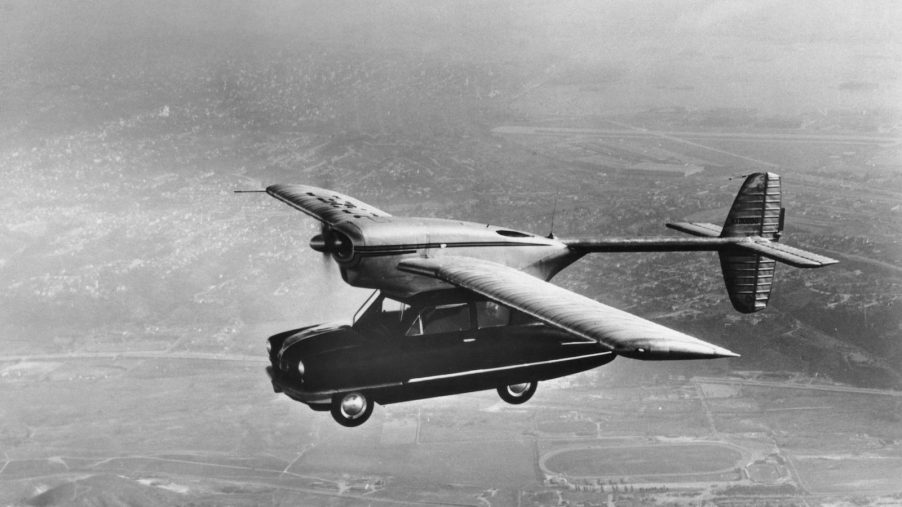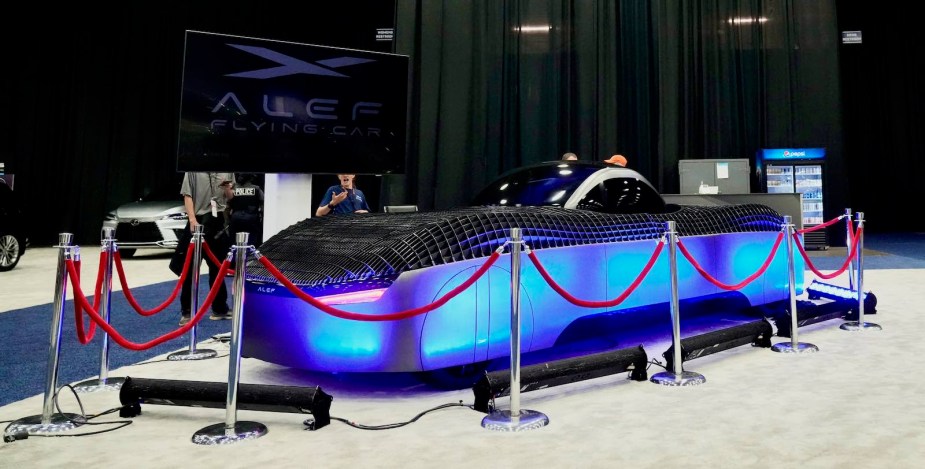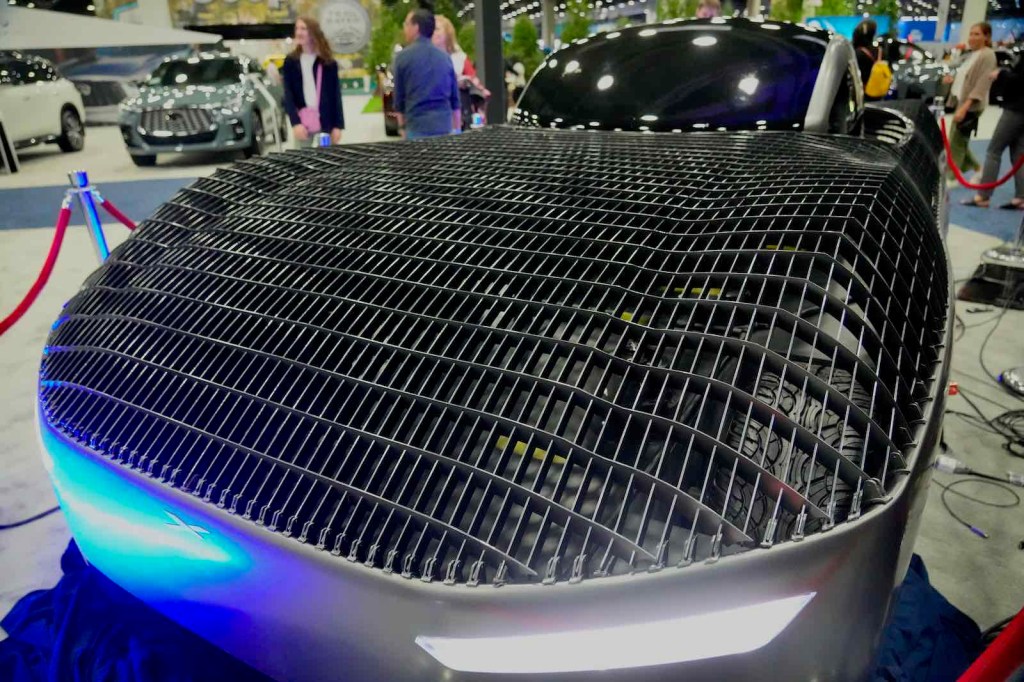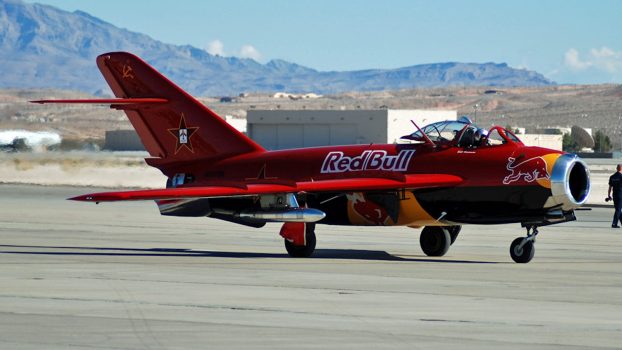
It’s 2024: Dude, Where’s My Flying Car?
This year’s Detroit Auto Show and Consumer Electronics Show both featured a separate startup with a sleek quadcopter inspired flying car prototype. But this idea is nothing new, and there’s a reason it’s never gone into production.
At the Detroit Auto Show, (technically now called the North American International Auto Show, but who’s got time to type that?) I got to see Alef Aeronautics latest mock-up in person. It is a car-shaped structure built around a rotating bubble cockpit with room for two passengers. On roads, its electric hub motors are rated for just 25 mph. But the plan is for it to take off vertically, for the body to swivel sidways, and then for the eight rotors inside the body to pull it through the air.
Alef hasn’t announced tests of even scale models. But the FAA has given it a go-ahead to design this new type of vehicle. Here’s a photo I took:

But that’s not all. At CES, Chinese-based Xpeng showed some test footage. This included one of its quadcopter’s attached to the roof of what appears to be a sedan–and flying! You can see it below.
But neither of these are the first flying car concept I’ve seen. In fact, we’ve all been seeing them in the news for years. And there’s a good reason we have yet to see them on the street.
Back when I was a kid, I’d look forward to my Popular Mechanics all month. The day each issue arrived, my brother and I would fight over it, pouring over every article. I’ll never forget the cover photo of the bright red flying car and the article that promised it would be in production in 18 months. The company didn’t ever…take off.
My story takes place in the early 2000s. But here’s the kicker, Popular Mechanics ran very similar stories in the 1950s, 60s, 70s, 80s, and 90s. And honestly, this makes sense. There has been a robust small aircraft industry for decades. And there have always been visionaries who imagined a helicopter or airplanes that could fold into your garage and/or taxi down the highway on road-legal tires.
The flying car is perpetually just around the corner. But there’s a good reason it never arrives.

I know, you’re saying quadcopters have become ubiquitous. Computerized flight controls are getting better and cheaper. The era of the flying car is finally just around the corner. This time they’ll work out. But you’re forgetting a fundamental truth about the laws of physics.
It requires exponentially more energy to fly than to drive.
Taking a few passengers and their gear up to altitude requires you fight gravity for every inch. That will always burn a lot of energy. And in any helicopter-style vehicle, you must continue burning energy to maintain altitude. It will always be more efficient to build winding roads and role along them than to fly–even in a straight line. Much much more efficient.
And there will be more downsides to the flying car as most vehicles go electric. Jet fuel is an incredibly dense energy source. A lithium ion battery powered jumbo jet would be absurdly heavy. So electric aircraft may be limited to a remote control drone size until we come up with a better battery.
Even if we weren’t limited by energy storage, we will be limited by energy production for the foreseeable future. For this reason alone, most of use won’t be able to afford to commute in a flying car anytime soon.
So while there will always be a Popular Mechanics cover story about the latest flying car prototype. And there will always be a teenage boy hoping they can truly go into production. Until we have a complete energy revolution (fusion reactors?), flying cars simply aren’t happening.
Next, read about the surprising downsides of self-driving cars, or see Neil deGrasse Tyson’s theory as to why there will never be widespread flying cars in the video below:







